As artificial intelligence keeps transforming business operations in 2026, organizations have been challenged more than ever to deal with risks that are associated with AI. The stakes have never been higher due to such components as algorithmic bias and data privacy violations, model drift, and non-compliance with regulations. AI risk management solutions have become important solutions to businesses wishing to introduce artificial intelligence systems securely, ethically, and aligned with global standards and frameworks, including the EU AI Act and the NIST AI Risk Management Framework
These platforms integrate machine learning, automated compliance guarding, real-time identification of dangers, and predictive analytics to assist organizations to detect vulnerabilities, foreseeing them into expensive cases. It makes no difference whether you are a startup that is trying to experiment with using generative AI or a bigger company dealing with complex AI infrastructures: choosing the adequate risk management tool can either result in innovations or reputation-tarnishing failures. This is a detailed guide on the best 10 AI risk management tools in 2026, their features, cost, and how they can be best utilized to help you choose the right tool.
What Is AI Risk Management?
AI risk management refers to the methodical approach to defining, evaluating, overseeing, and reducing artificial intelligence risky behaviors during the lifecycle. Several types of risk such as technical risks such as the loss of accuracy of models and system failures, ethical risks such as bias in algorithms and the issue of fairness, security risks such as the problem of adversarial attacks and data breaches, compliance risks such as the regulation necessities, and operational risks such as the business continuity are covered in this field.
Good AI risk management practices include putting in place regulative structures that determine roles and responsibilities, use of sustained monitoring mechanisms to measure model performance and spot exceptions, regular bias audit to guarantee that there is a level of fairness among different groups of people, full-documentation of practices to showcase compliance and accountability or the establishment of an incident response mechanism in case things go wrong. With the increased autonomy and impact of AI systems on the important decisions made by an organization, effective risk management practices are needed to ensure the establishment of trust among stakeholders and the safeguarding of organizational resources.
Why You Need AI Risk Management Tools
- Regulatory Compliance: The companies will have to abide by more strict AI laws such as the EU AI Act, which requires risk assessments and disclosure of high-risk AI systems.
- Bias Detection and Mitigation: The AI models may reproduce or increase societal biases in the training data, resulting in discriminatory hiring, lending, and criminal justice use.
- Security Threat Prevention: Artificial intelligence has special security issues such as prompt injection attacks, data poisoning, model inversion, and adversarial examples.
- Model Performance Monitoring: AI models deteriorate with time and concept drift, as well as changes in the data distribution. The model accuracy, reliability are continuously watched on by risk management platforms.
- Reputation Protection: Failure of AI can lead to a lot of reputation damage, and customer mistrust. Risk management Proactive risk management assists an organization in evading the controversies in the eyes of the mass media involving biased, unsafe at the same time.
Comparison Table
| Name | Standout Feature | Ideal For | Pricing |
| AccuKnox | Zero Trust runtime security | Cloud-native enterprises | Free/Custom |
| IBM Watson Governance | Explainable AI governance | Large enterprises | Custom |
| Credo AI | Bias detection framework | Ethical AI adopters | Custom |
| Holistic AI | Fairness metrics tracking | Regulated industries | Custom |
| Calypso AI | LLM security protection | Generative AI companies | From $500/month |
| Riskonnect | Predictive risk modeling | Complex enterprises | Custom |
| LogicManager | Centralized risk repository | Structured GRC needs | Custom |
| SafetyCulture | Mobile risk management | Manufacturing/healthcare | Free/From $24/user |
| OneTrust | Privacy breach detection | Data privacy focused | Custom |
| Riskified | Fraud prevention optimization | E-commerce businesses | Custom |
Top 10 AI Risk Management Tools in 2026
1. AccuKnox
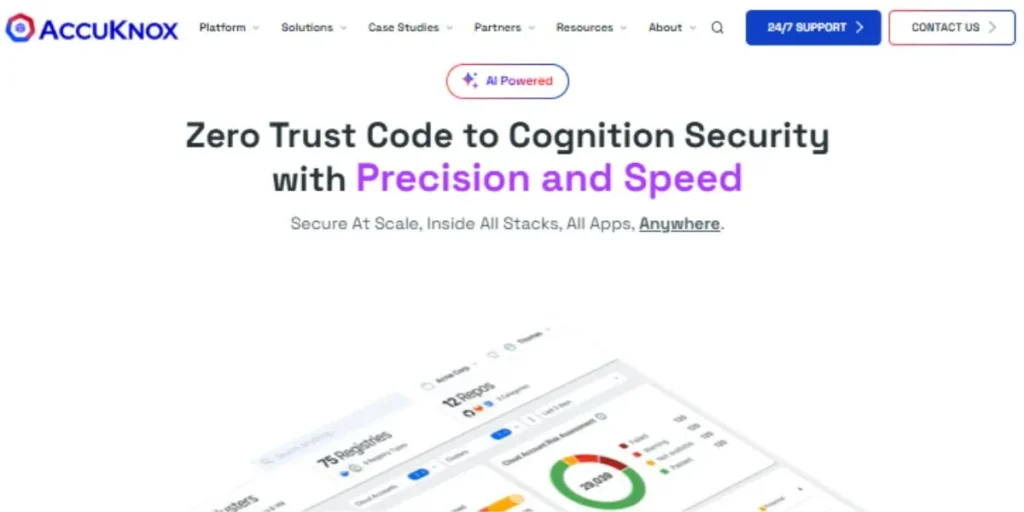
Best for: Cloud-native and Kubernetes environments.
With its original approach of Zero Trust, AccuKnox is the pioneer in the 2026 AI risk management and governance market. It is a platform that focuses on safeguarding cloud-based AI and machine learning workloads with the help of eBPF and LSM. It also serves as an AI compliance tool with full-scale automation for major frameworks such as SOC2, HIPAA, GDPR, and the EU AI Act, making it ideal for enterprises operating in regulated industries. AccuKnox achieves this through its open-source foundation, KubeArmor, which offers flexibility while maintaining enterprise-grade security features.
Key Features:
- AI workload1 Zero Trust protection of runtime.
- Automated global regulations compliance.
- Real-time timely injection threat detection.
Pros:
- Open-source foundation saves money.
- Superior cloud integration features.
- AI-specific risk focus areas
Cons:
- Difficult preliminary installation needed.
- Reduced free tier functionality.
- Cloud-concentrated might be off-premise.
Pricing: Free Plan, Enterprise Pricing.
Rating: 4.8/5
Website: https://www.accuknox.com
2. IBM Watson Governance
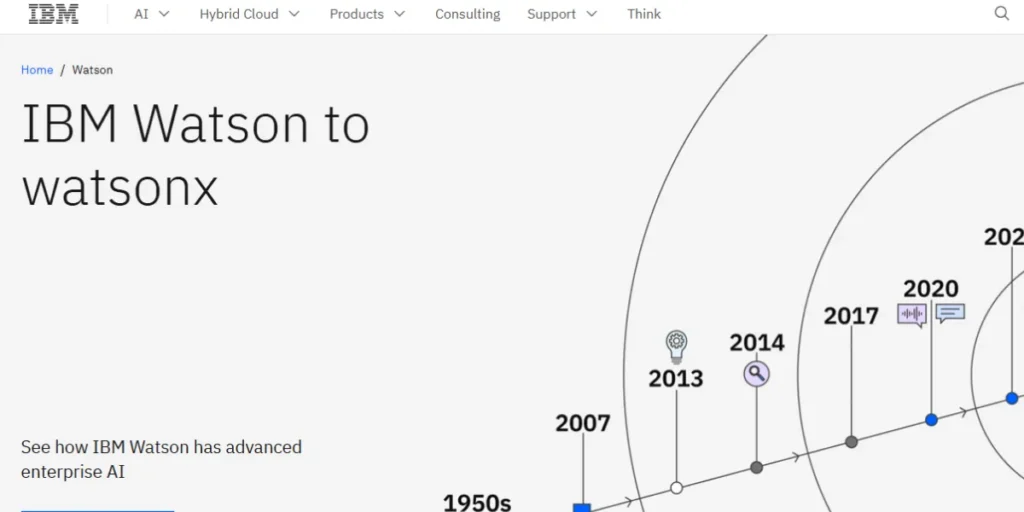
Best for: Enterprise AI management and control.
IBM Watson Governance continues to be a big player in AI risk management, offering comprehensive governance services across the entire lifecycle of AI models. The platform excels in explainable AI capabilities, making complex model decisions understandable and auditable. With powerful integration features for enterprise applications such as Salesforce and SAP, Watson Governance is ideal for organizations seeking strong AI program oversight. Its forecasting analytics further assist in predicting potential risks in advance.
Key Features:
- OEA full automation of AI lifecycle.
- Monitoring bias of this model in real-time.
- Enterprise system integration support.
Pros:
- Scalability of an enterprise grade.
- Powerful elucidable AI solutions.
- Complete regulatory compliance assistance.
Cons:
- Expensive implementation costs.
- High learning curve in the beginning.
- Expensive IT infrastructure is required.
Pricing: “Enterprise pricing on a slide.
Rating: 4.5/5
Website: https://www.ibm.com/watson
3. Credo AI
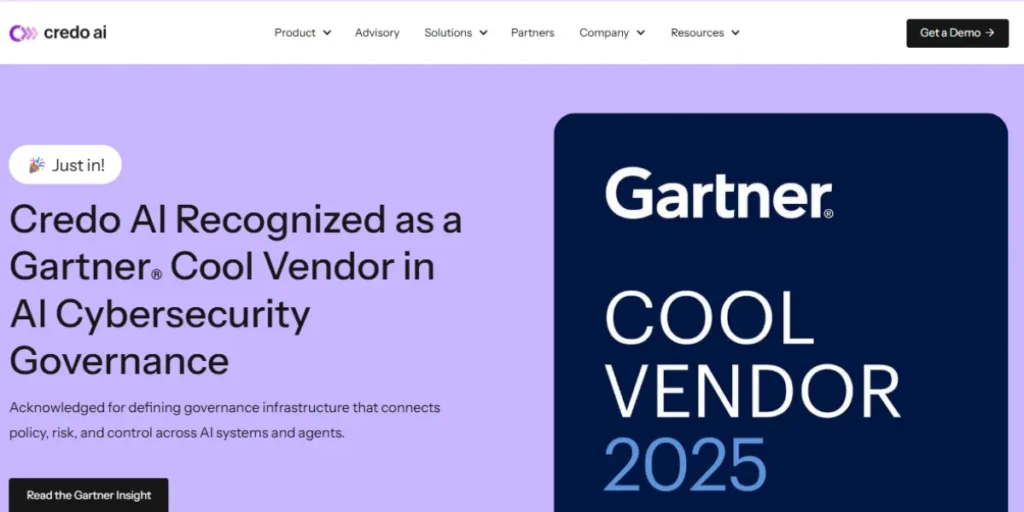
Best for: Organizations prioritizing ethical AI
Credo AI has become the preferred platform for companies that are serious about the responsible use of AI. The platform offers a multi-layered artificial intelligence governance framework that adheres to NIST recommendations and the requirements of the EU AI Act, with particular strength in bias detection and mitigation. Its user-friendly interface allows non-technical stakeholders to engage easily, enabling cross-functional teams to collaborate on AI governance. Additionally, the platform ensures continuous compliance within DevOps and MLOps pipelines.
Key Features:
- Implementation of NIST-aligned governance framework.
- Conscious bias generating algorithms.
- Integrating DevOps and MLOps.
Pros:
- Strong ethical AI focus
- Easy to use among different teams.
- Elastic workflow assimilation alternatives.
Cons:
- Low-level sophisticated cybersecurity.
- Higher pricing for startups
- Less suited for non-AI risks
Pricing: Custom pricing depending on the size of the organization.
Rating: 4.7/5
Website: https://www.credo.ai
4. Holistic AI
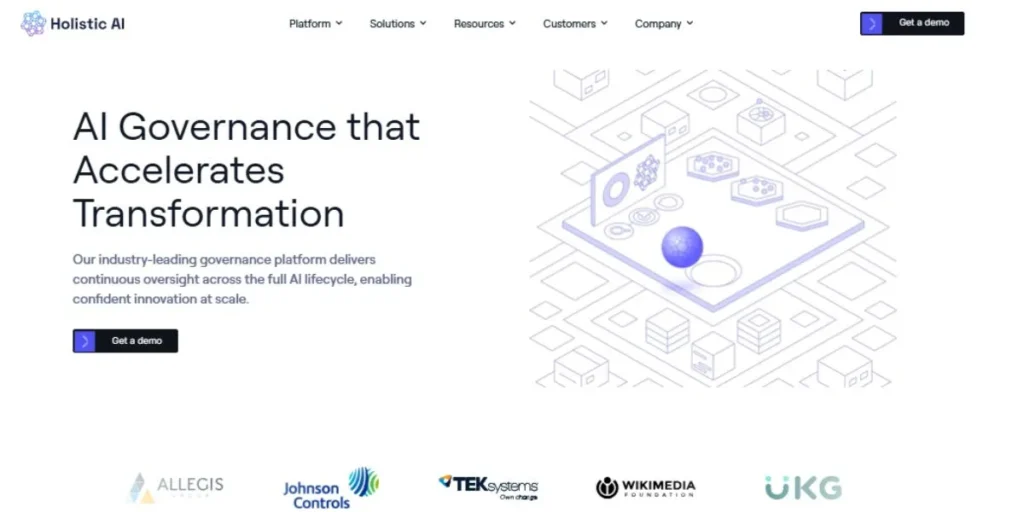
Best for: Heavily regulated industries
Holistic AI has the capability to provide end-to-end risk management that is based on fairness, responsibility, and regulating activities. This platform includes advanced bias detection algorithms and fairness scores explicitly tackling AI models used in healthcare, finance, and government fields. As Holistic AI supports multi-language AI rollouts and can be connected to leading cloud systems, it can scale to allow global businesses. Anomaly detection in real-time assists in detecting a security threat and performance degradation fast.
Key Features:
- Outsourcing calculation of advanced fairness measures.
- Automated international compliance regulation.
- On-the-fly intrusion detection.
Pros:
- Strong accountability capabilities.
- Well-developed regulatory compliance instruments.
- Scalability of global enterprises.
Cons:
- Poor cybersecurity functionality.
- Small teams involve complicated setups.
- Secret additions add to the expenses.
Pricing: Direct company pricing offered.
Rating: 4.6/5
Website: https://www.holisticai.com
5. Calypso AI
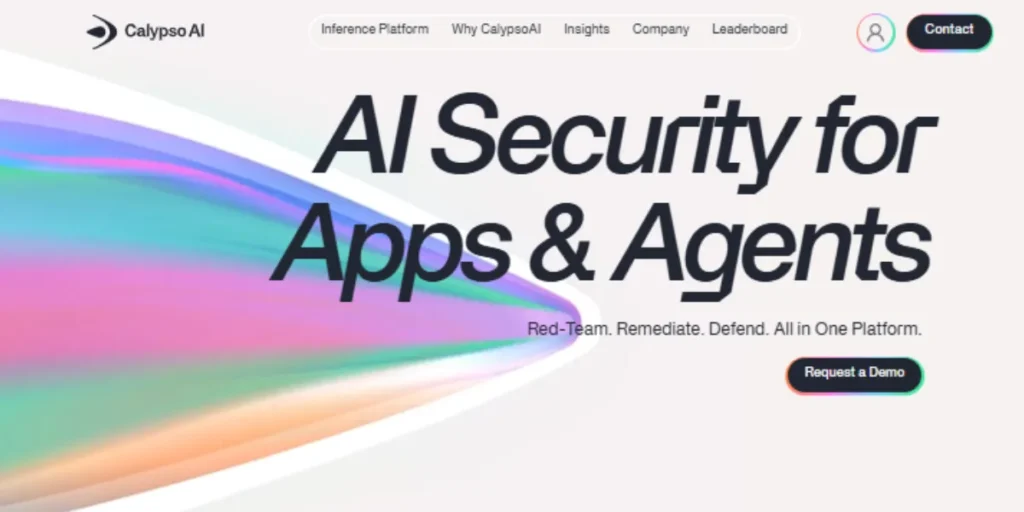
Best for: Large scale language model deployments.
Calypso AI has carved a niche in the AI risk management space by focusing on securing large language models and generative AI systems. As organizations increasingly adopt LLMs for customer service, content generation, and decision support, Calypso AI provides critical defense against prompt injection attacks and data leaks. The platform offers real-time tracking and automatic compliance with ISO/IEC 42001 standards. Notably, Calypso AI has achieved an 85% reduction in data leakage risks reported by clients, highlighting its effectiveness in enterprise AI security.
Key Features:
- Threat monitoring at Frenzied LLD.
- Application: Access prevention Prevention of the prompt injection attack.
- Automated Tracking of ISO compliance.
Pros:
- In-house legal knowledge of security.
- Large data leakage prevention.
- Designing an intuitive dashboard interface.
Cons:
- Limited to AI security
- Option pricing on the features.
- Not that much suitable to conventional AI.
Pricing: Beginning with $500 / month.
Rating: 4.7/5
Website: https://calypsoai.com/
6. Riskonnect
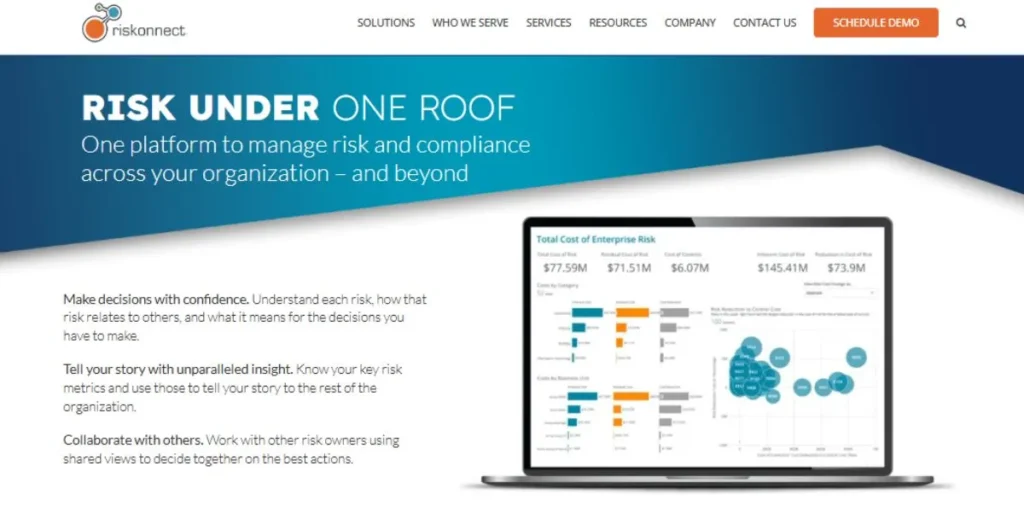
Best for: Difficult enterprise risk locations.
Riskonnect offers AI risk assessment software that powers enterprise-wide risk management by connecting disparate data, systems, and stakeholders for comprehensive risk visibility. The platform excels in predicting potential risks through AI-driven forecasting, helping organizations prevent disruptions before they occur. Riskonnect integrates seamlessly with over 500 third-party applications, making it highly adaptable to existing enterprise tech stacks. Additionally, it addresses not only AI-related risks but also supplier, cyber, and operational risks, ensuring holistic enterprise resilience.
Key Features:
- Predictive risk modeling which is AI-enabled.
- More than 500 external application integrations.
- Live compliance monitoring dashboard.
Pros:
- Comprehensive ecosystem of integration.
- Scalability on an enterprise level.
- Powerful predictive analytics processing.
Cons:
- Complicated installation demands skills.
- Expensive implementation costs.
- Complicated interface to first-time users.
Pricing: Custom prices according to requirements.
Rating: 4.5/5
Website: https://www.riskonnect.com
7. LogicManager
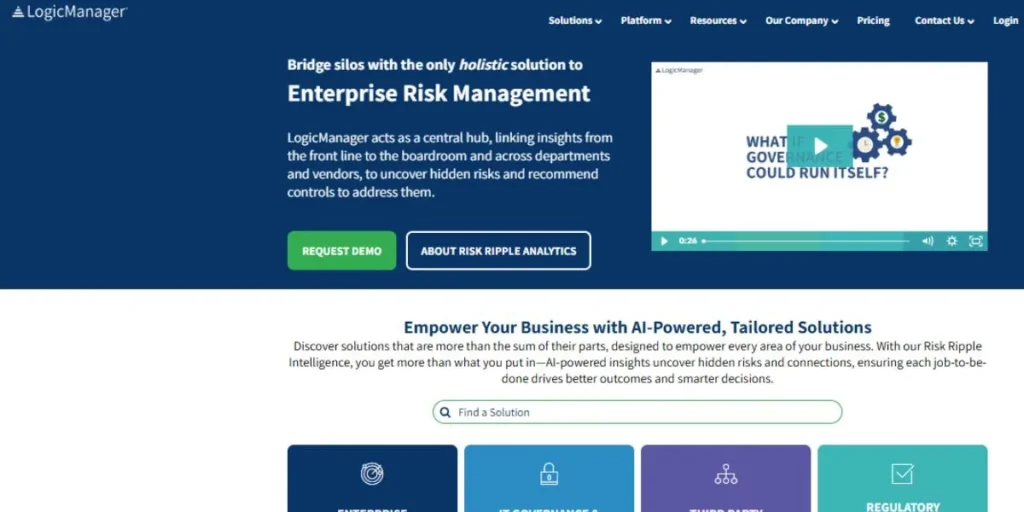
Best for: Organized GRC programs.
LogicManager is a unified system of governance, risk, and compliance management that has AI-prone improvements. The system offers a structured method of risk management based on customized templates, automated processes, and unified information stores. The AI features of Loman Technology are associated with risk identification, risk prioritization, and predictive analytics. The platform enables various industries with multiple configuration options and robust reporting capabilities to enable the board-level visibility.
Key Features:
- The repository of risk data.
- Intelligent risk prioritization machine.
- Templates which are industry specific and customizable.
Pros:
- Organized systematized style.
- Well-developed compliance reporting tools.
- Flexibility of multi-industry.
Cons:
- Long original installation.
- Minimal higher-order AI intelligence.
- Expensive to more small organizations.
Pricing: Custom pricing depending on the size of the organization.
Rating: 4.6/5
Website: https://www.logicmanager.com
8. SafetyCulture
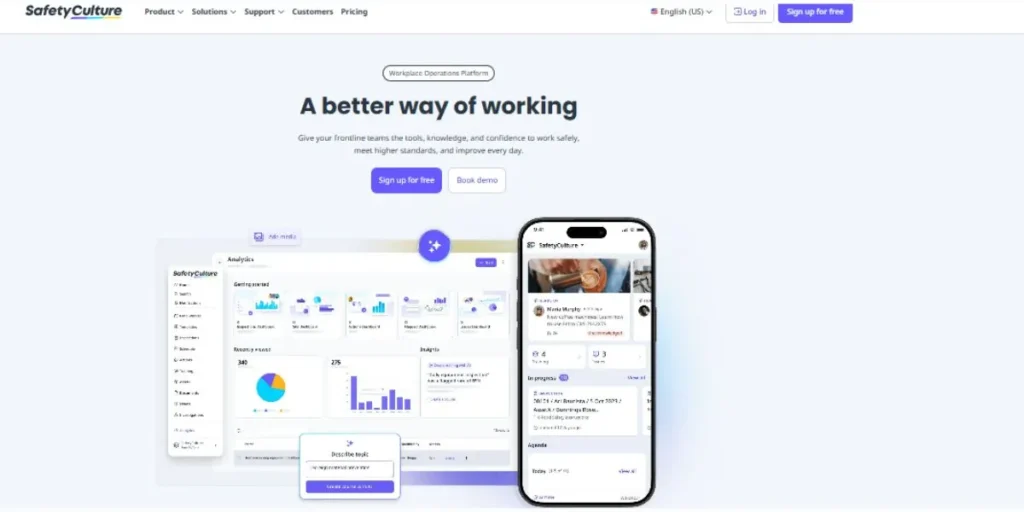
Best for: operational and workplace safety.
The concept of SafetyCulture drives AI risk management transformation in workplace and operational safety through its mobile-first technology. The platform proves especially effective in manufacturing, healthcare, and field service environments where on-ground risk assessment is critical. SafetyCulture digitizes traditional paper-based processes, enabling real-time hazard identification and compliance checks. Its mobile app empowers frontline workers to report risks instantly, while AI-powered analytics deliver predictive insights to help organizations prevent incidents before they occur.
Key Features:
- Risk assessment standard platform based on mobile first.
- Analytics of real-time hazards detection.
- Automated safety compliance tracking.
Pros:
- Good mobile functionality.
- High safety concentration at work.
- User-friendly for all staff
Cons:
- Minor AI-specific risk characteristics.
- Not so appropriate to large organizations.
- The upgrades are needed to premium features.
Pricing: They offer a free edition, paid subscriptions starting with $24/user/month.
Rating: 4.8/5
Website: https://www.safetyculture.com
9. OneTrust
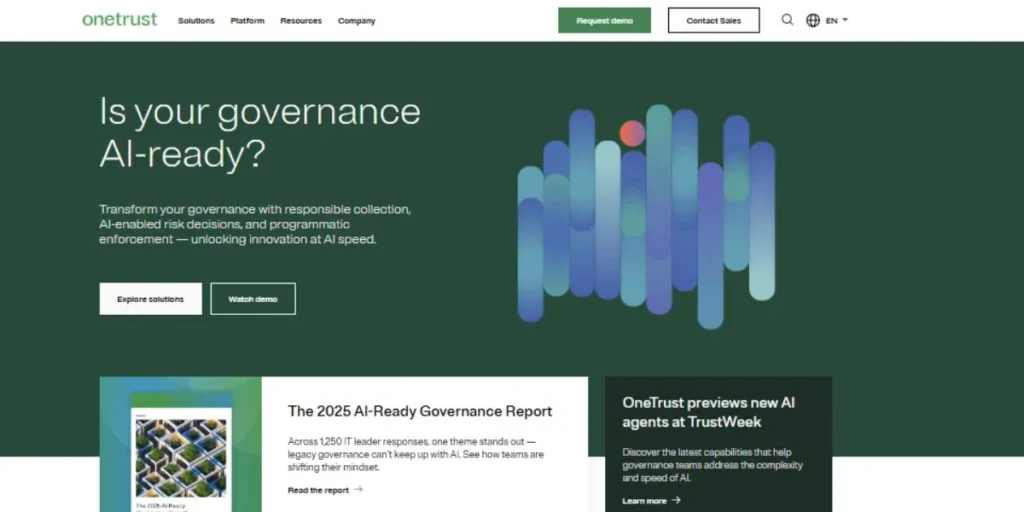
Best for: AI governance and data privacy.
OneTrust has now made its data privacy leadership a paradigm of AI governance, which is best suited where data protection and AI implementation border each other in an organization. The site offers AI-assisted data cataloging, automated privacy breach detection, and overall compliance control of the GDPR, CCPA, and the EU AI Act. The explainable AI capabilities of OneTrust would assist an organization in proving transparency requirements. The capabilities of third-party risk management can offer extra coverage to internal AI systems.
Key Features:
- Automation of AI-based data cataloging.
- Automated privacy intrusion detection.
- An AI that is explainable to be transparent.
Pros:
- Powerful data privacy knowledge.
- Scalability of global enterprises.
- User-friendly interface that is not technical.
Cons:
- High cost for features
- Inadequate AI model-specific agents.
- Complex small team setup
Pricing: Personal enterprise pricing.
Rating: 4.7/5
Website: https://www.onetrust.com
10. Riskified
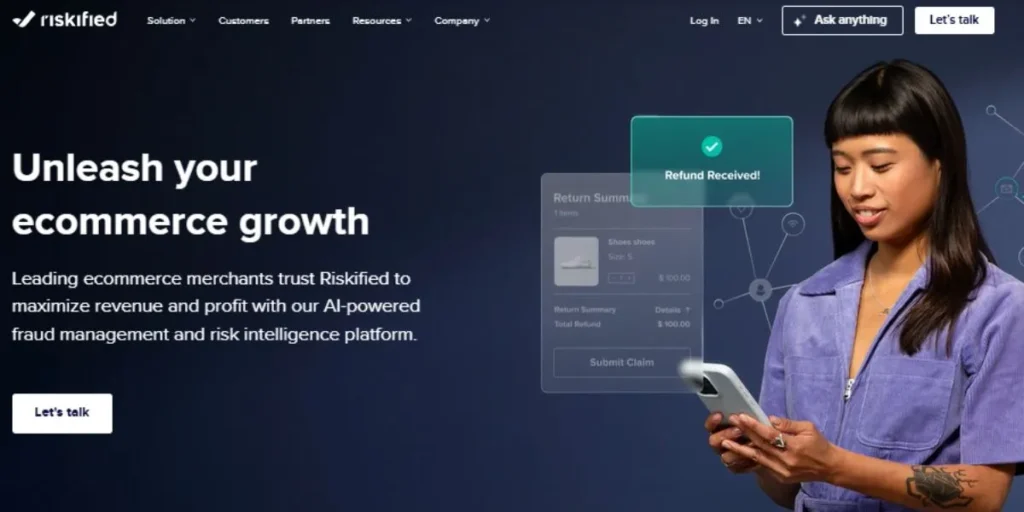
Best for: Prevention of online fraud.
Riskified is an AI-based risk management of e-commerce and financial products with particular emphasis on fraud and transaction optimization detection. The system employs AI through powerful machine learning software that processes transaction reports in real-time and identifies genuine clients and fraudsters with a high level of accuracy. The strategy of Riskified boosts the rate of transaction approval even more than chargebacks and fraud losses. The platform is unified with key payment systems and online shopping sites.
Key Features:
- Possible (machine learning) fraud detection.
- Real time system of analysis of transaction.
- Scorecard of e-commerce risk automation.
Pros:
- Very efficient fraud prevention.
- Enhances the rate of approval bountifully.
- Retail-friendly to the user.
Cons:
- Limited to e-commerce risks
- Features pricing is offered at a premium.
- Less suitable for non-retail
Pricing: Custom prices depending on transacting volume.
Rating: 4.6/5
Website: https://www.riskified.com
How to Conduct an AI Risk Assessment
- Define Assessment Scope: The first step is to define the AI systems, models, and applications that will be evaluated. Record purpose, data sources, decision-making of AI system.
- Identify Risk Categories: Classify possible risks, such as technical (accuracy, robustness), ethical (bias, fairness), security (data breaches, adversarial attacks), compliance (regulatory violations).
- Evaluate Risk Likelihood and Impact: Evaluate each risk that has been identified by estimating its probability of occurrence and possible business impact. A risk combination with high probability and with a severe consequence should be given priority using a risk matrix.
- Document Mitigation Strategies: Make certain mitigation plans to combat each high risk such as technical, policy, and monitoring and contingency plans.
- Establish Continuous Monitoring: Establish a system of continual monitoring to monitor or observe the risk indicators. Organize frequent reevaluations to recognize alterations in the behavior of the AI system, data distributions.
How to Choose the Right AI Risk Management Tool
- Assess Your Risk Profile: Determine your major risk areas within your organization whether they are compliance based, security based, prejudice based or about an operation.
- Evaluate Integration Capabilities: Make sure the tool uses your current technology stack such as cloud platforms, DevOps pipelines, data warehouses and enterprise systems.
- Consider Scalability Requirements: Choose the tools that can expand with your AI efforts. Enterprise solutions that are over-engineered should not be implemented in small organizations.
- Examine Usability and Training: Determine the technical skills of your team with the complicated tools or choose blendable interfaces. Take into account learning curve, documentation and quality of vendor support.
- Review Pricing and ROI: Compare pricing strategies such as subscription plans, per-user plans, and feature plans. Determine the potential ROI by estimating costs that would have been incurred by utilizing a tool in place of solid risk management.
Benefits of Using AI Risk Management Tools
- Proactive Risk Detection: Autonomous scheduling systems detect defects, irregularities, and low performances before they cause an incidence.
- Regulatory Compliance Automation: Automated tools help monitor the implemented regulations and their changes, examine the compliance status, create the necessary documentation, and draw the stakeholders attention to gaps.
- Improved Decision-Making: The dashboards with risks that are visible to boards and executives are huge in terms of the understanding of the AI-related risks. Evidence-based analysis can be used to make informed judgments regarding AI investments, deployments, and governance policies.
- Resource Efficiency: Automation and manual efforts needed to complete risk assessments, checks on compliance, and monitoring activities are decreased.
- Enhanced Stakeholder Trust: Effective risk management practices have demonstrable effects that instill confidence among customers, investors, regulators as well as employees.
Conclusion
By 2026, the issue of AI risk management has evolved into a value-added consideration into being a business necessity. The instruments discussed in this guide are the best in the AI Risk Management Tools, and they have specific advantages to address the needs of various organizations. According to AccuKnox, cloud-native environments have been patented under the name Zero Trust or provided by Riskified, a specialized company in fraud prevention of e-commerce, the breadth of solutions is equal to the level of threat to the organization.
It is important to keep in mind that the tools are not enough to ensure the responsible AI usage, and they have to be complemented by effective governance systems, professional staff, and organizational determination to cleanse AI usage. Since regulations keep changing and the power of AI is growing, it will be essential to remain flexible in your risk management strategy.
FAQs
What are AI risk management tools?
AI risk management tools are software’s based platforms that are automated, use machine learning, and analytics to identify, assess, monitor, and mitigate risks related to artificial intelligence systems across their lifecycle.
Do I need an AI risk management tool if I’m just starting with AI?
Yes, even the early-stage AI applications can be helpful with risk management tools. They aid in the formation of good governance practices at the early stage and avert expensive errors that would be difficult to correct in the future.
How much do AI risk management tools typically cost?
Prices differ a great deal between free (SafetyCulture, AccuKnox) and custom enterprise prices. Costs are estimate at between $500 and 5,000 and more monthly depending on the features and size of the organization.
Can AI risk management tools prevent all AI-related incidents?
There is no single tool that aids in the prevention of all incidents; however, these tools greatly minimize both the probability and effect of risks by early detection, automated surveillance, and proactive remedial actions.
What’s the difference between AI risk management and traditional risk management?
The management of AI risks is also taking care of specific problems such as model drift, algorithmic bias, adversarial attacks and explainability issues which do not exist in the conventional risk field.
 Get 50% off on Vault theme. Limited time offer!
Get 50% off on Vault theme. Limited time offer!